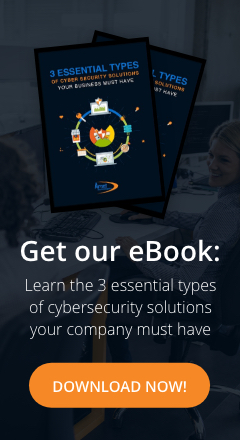According to Gartner, the average cost of technology downtime is $5,600 per minute. Although this figure varies depending on the size and systems of the affected business, there’s no doubt that unexpected IT downtime is something you must avoid. After all, we live in a world where customers expect instantaneous service.
There’s no such thing as a perfect IT infrastructure, but service disruptions are far more common than they need to be. They affect businesses big and small across every industry. An outage can occur for a wide range of reasons — from natural disasters to cyberattacks — but they share certain common characteristics. Here are some of them:
Human error
As the saying goes, a bad workman blames his tools. Technology is often the first to get the blame when something goes wrong, but the true culprit of most IT problems is a mistake made by the user. Even industry-leading brands are susceptible to prolonged downtime as a result of human error, as Amazon found out when its online storage service went down for four hours, taking loads of high-profile websites along with it.
Amazon’s unexpected downtime disaster was hardly a unique case. Much like the thousands of others that don’t make headlines, the Amazon outage was a result of one employee making a mistake. Everyone makes mistakes every once in a while, but that doesn’t mean you shouldn’t work toward improving your employees’ technology IQ.
Training your entire office on how to avoid common mistakes and security slip-ups will reduce your risk exposure dramatically. And given how quickly the IT landscape changes, you need to offer company training at least annually, along with accountability programs.
Low resilience
Most companies have response plans and processes in place for unexpected outages, but they’re often far more complicated and expensive than they need to be. Virtualization and cloud technology can create backups of your mission-critical systems that automatically come online when a downtime event is detected. This eliminates the possibility of a single point of failure and keeps your operation running when other companies are struggling to get back online.
In a more complicated system, failures are far more likely. If, for example, you updated your in-house computer systems and your backup configurations on the same day, you run the risk of creating a single point of failure that could cause serious damage if the updates didn’t go as planned. Problems like this usually arise when one or two in-house IT technicians have too many balls in the air. They get a brief break from troubleshooting requests and try to do as much as possible in a short time. This ultimately leads to more problems than an IT team with more time to plan would run into.
IT asset failures
Human error is behind most outages, but hardware isn’t blameless, no matter how well it’s maintained and how regularly it’s updated. Natural disasters, for example, can render even the most robust data center inaccessible. On top of that, new software integrations may run into compatibility issues. Other problems that can occur without any warning include never-before-seen malware and dangerous software bugs.
The fact that technology can fail at any moment for a multitude of reasons illustrates the need for avoiding a situation where you have a single point of failure. However, you can minimize hardware and software failures by updating your systems and anticipating unexpected events such as hardware crashes.
Sometimes, it’s best to leave enterprise computing to a third-party provider with the expertise and IT experience your business needs to thrive. That’s where Arnet Technologies comes in. We provide managed services and consultations to companies in the Greater Columbus area. Call us today to find out more.

